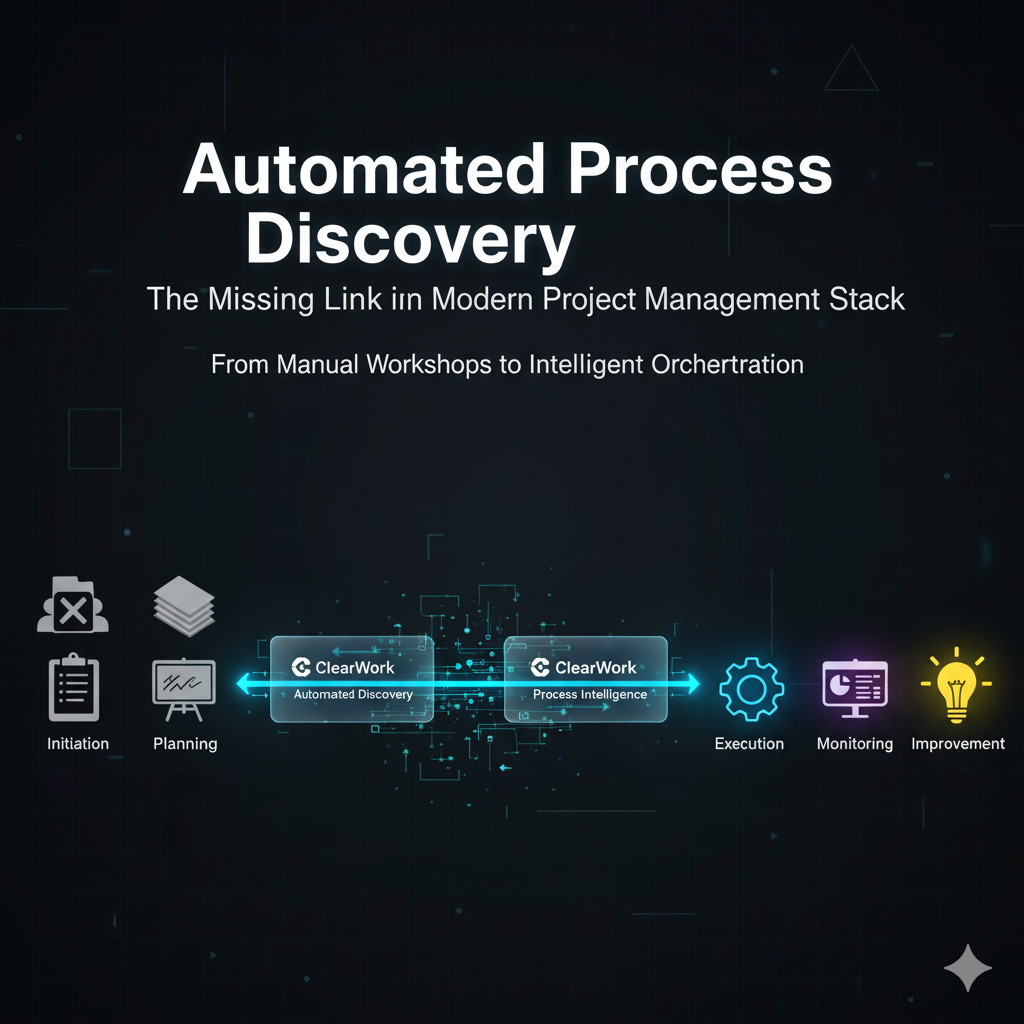
Even with all the innovation in project management tools — from cloud-based dashboards to AI copilots — one part of the lifecycle has been left behind: the discovery phase.
It’s ironic. Teams have automated scheduling, collaboration, documentation, and reporting… yet the first and most critical step of every project still runs like it’s 2005. Hours of interviews. Endless workshops. Whiteboards filled with sticky notes that someone promises to “digitize later.”
In the era of automation and AI, discovery shouldn’t be manual. It should be automatic.
Project discovery is supposed to define what you’re building and why. It’s where teams identify current processes, pain points, and requirements before designing or implementing anything new.
The problem? That process is slow, subjective, and expensive.
This “manual discovery gap” sits right between project planning and execution — and it’s where delays, misalignment, and rework often start.
In the Ultimate Guide to Modern Project Management Tools, we explored how tools like Jira, Smartsheet, and ServiceNow have modernized nearly every other part of the lifecycle. But the discovery phase hasn’t evolved — until now.
Automated process discovery is the next leap forward in project readiness. This toolset is broken into two key components
In other words, it skips the workshop and discovers processes automatically.
Tools like ClearWork Automated Discovery and ClearWork Process Intelligence make this possible by capturing real user activity directly from browser-based enterprise applications (like Salesforce, SAP, and ServiceNow). Within hours, you can see the true current state — no interviews, no assumptions, no whiteboards required.
Let’s be clear — this isn’t about replacing collaboration. It’s about removing the guesswork and inefficiency that slow everything down.
Traditional discovery takes weeks or months. Automated discovery collects real process data in days. That means you can move from “What do people do?” to “What should we automate?” almost immediately.
Discovery consulting can cost thousands per workshop. Automated discovery eliminates manual documentation and streamlines information collection, reducing discovery costs by at least 70%.
Automated discovery doesn’t rely on opinion or memory. It’s built on hard data — actual system usage, step-by-step. This gives teams confidence that their requirements and designs reflect reality, not assumption.
When the discovery phase is automated, every other phase benefits:
In short, automated discovery doesn’t just speed up the start of a project — it elevates the quality of the entire lifecycle.
In the old model, discovery was a one-and-done exercise. You learned how things worked once and moved on.
With modern process intelligence tools, discovery becomes continuous. Systems like ClearWork Process Intelligence continuously monitor how processes evolve — identifying bottlenecks, missed automations, and new opportunities for improvement.
This means your organization isn’t just managing projects more efficiently — it’s learning from itself in real time.
Automated discovery is more than a shortcut. It’s the foundation for a data-driven transformation approach that ties every project decision to reality.
As enterprises begin embedding AI and agentic workflows into their project stacks, these systems will rely on process data to stay grounded — to understand how work actually happens before deciding what to automate.
Automated process discovery is how you get that grounding. It’s how you make transformation predictable instead of painful.
The tools in the modern project management stack have evolved — but it’s time for discovery to catch up.
Automated process discovery represents the shift from assumption to observation, from documentation to intelligence, from lag to velocity.
Your next project doesn’t need another workshop. It needs clarity from day one.
👉 Explore how ClearWork Automated Discovery helps teams skip the manual effort and start with a true understanding of how work gets done.

Most projects lose weeks (and tens of thousands of dollars) before they even start because discovery is still manual. ClearWork’s Automated Process Discovery captures how work actually happens across your systems—no interviews, no sticky notes, just instant visibility. Discover how you can launch your next project with clarity, confidence, and momentum from day one.
Enjoy our newsletter!